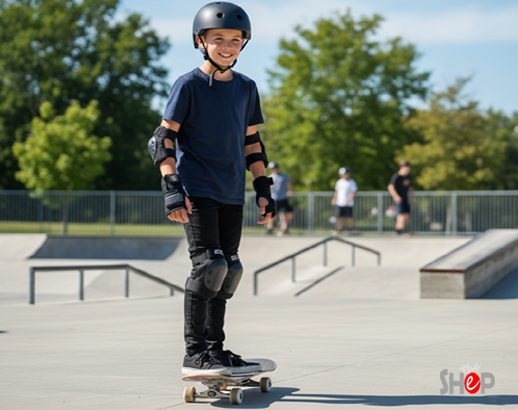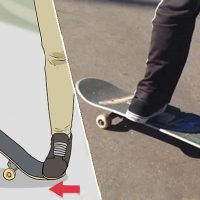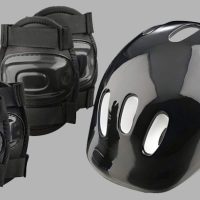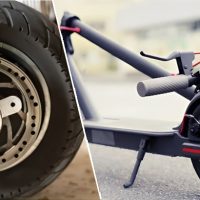Top 5 Skateboard Safety Tips: Your Ultimate Guide

Skateboarding is more than just a hobby; it’s a culture, a form of self-expression, and an exhilarating way to get around. However, like any sport, it comes with risks. Understanding and implementing essential skateboard safety tips is not just about avoiding injury—it’s about building confidence and ensuring you can enjoy the ride for years to come. Whether you’re a first-time rider looking to master your balance or an experienced skater perfecting a new trick, prioritizing safety should always be your number one goal. This comprehensive guide will walk you through the five most important precautions every skateboarder should know.
1. Always Wear the Right Protective Gear

This is the golden rule of skateboarding, and for good reason. Injuries are an inevitable part of learning, but the right protective gear can be the difference between a minor scrape and a trip to the emergency room. Don’t let a fear of looking “uncool” keep you from protecting your body.
- Helmets: A properly-fitting helmet is your most critical piece of equipment. Head injuries are the most serious type of injury you can sustain while skateboarding, ranging from concussions to permanent brain damage. A helmet certified for skateboarding (look for ASTM F1492 certification) is designed to withstand multiple impacts and will protect your head from serious harm. It should fit snugly and not wobble when you shake your head.
- Wrist Guards: When a skateboarder falls, their first instinct is often to stick out their hands to break the fall. This can lead to painful wrist fractures, which are among the most common skateboarding injuries. Wrist guards are designed to absorb the impact and support your joints, significantly reducing the risk of a broken bone.
- Knee and Elbow Pads: These pads protect your joints and skin from scrapes, bruises, and road rash. They are particularly important for beginner skateboarding as falls are frequent. Wearing pads can give you the confidence to push your limits without fear of painful scrapes.
“We recommend starting with a high-quality helmet and a set of pads. You can find excellent options on Amazon [Helmet ] and [Pads ].”
2. Master How to Fall Safely
Falling is an unavoidable part of skateboarding. Knowing how to fall properly is a crucial skill that can prevent serious injury. The key is to relax and roll with the fall, rather than trying to stop it with stiff limbs.
- Crouch Down: If you feel yourself losing your balance, crouch low to the board. This reduces the distance you have to fall, minimizing the impact.
- Roll, Don’t Stop: Instead of trying to stop your momentum with outstretched hands or feet, try to land on the fleshy parts of your body and roll. This dissipates the force of the fall across a wider area, reducing the risk of a focused, breaking impact on a single joint. Practice this technique on a soft surface like grass to build muscle memory.
- Protect Your Head: Always prioritize protecting your head. If you know you are going to fall, tuck your chin into your chest to prevent your head from whipping back and hitting the ground. This is where your helmet comes into play, providing a final layer of defense against a serious head injury.
3. Know Your Surroundings and Skate in a Safe Zone

Your environment plays a huge role in your safety. Even with the best protective gear, a dangerous location can lead to an accident.
- Avoid Traffic: The most serious accidents happen on or near roads. Never skateboard in the street, especially not in a moving lane of traffic. Stay on sidewalks or, better yet, in designated areas.
- Choose a Safe Surface: Look for smooth, dry pavement. Small cracks, loose rocks, or uneven surfaces can cause your wheels to stop unexpectedly, sending you flying. Always check the ground for debris before you ride.
- Visit a Skate Park: The safest place to practice your skills is at a skate park. These environments are designed specifically for skateboarding and are free of traffic and most common obstacles. They are a great place to learn and progress in a controlled setting.
4. Regularly Inspect Your Skateboard (Skateboard Maintenance)

A well-maintained board is a safe board. A loose truck or a cracked wheel can lead to an unexpected bail. Make it a habit to perform a quick safety check of your equipment before every ride. This process is a key part of skateboard maintenance and only takes a few minutes.
- Check the Trucks: Use a skate tool to ensure your trucks are tightly bolted to the deck. Loose trucks can cause “speed wobbles” and make it difficult to steer.
- Inspect the Wheels and Bearings: Make sure your wheels spin freely without any strange noises. Check for any cracks or chips. If you notice a wheel isn’t spinning well, it may be time to clean your bearings or replace them.
- Assess the Deck and Grip Tape: Look for cracks or stress fractures in the deck. Also, make sure your grip tape is clean and provides enough traction. Worn-out grip tape can cause your foot to slip, leading to a loss of control.
- Internal Link: When discussing the essential parts of your board, you can highlight this phrase to link to an article on your site like the essential parts of your board. For more detailed information on each component, you can also link to an article on how to choose the right skateboard size to help users select a board that’s safe and comfortable for them.
5. Start with the Basics and Progress Slowly
Confidence comes from competence, and competence is built on a solid foundation. Don’t rush the learning process.
- Learn the Fundamentals: Before attempting any tricks, you must master the basics. Practice pushing off, balancing, turning, and, most importantly, stopping. Learn to stop using your foot-brake and the tail-scrape method.
- Skate Within Your Ability: Pushing yourself is part of the fun, but know your limits. Don’t attempt to drop into a ramp if you haven’t mastered riding on flat ground. Building skills gradually reduces the chance of injury and makes the learning process more enjoyable.
- To help beginners find the perfect starting point, you can link to your article on how to choose a skateboard to help them select the right board that matches their skill level.
Conclusion: Ride Safe, Ride Smart
Skateboarding is a rewarding sport that offers a unique sense of freedom and accomplishment. By following these essential skateboard safety tips, you can minimize the risks and maximize the fun. Remember to wear your protective gear, understand how to fall, choose a safe environment, maintain your equipment, and progress at your own pace. A safe rider is a confident rider, and a confident rider will get the most out of their time on the board. So, gear up, check your board, and get ready to roll!
Arnold A. Jones: Your go-to source for electric scooters, hoverboards, and skateboards! Riding enthusiast and expert sharing tips, trends, and insights for riders of all levels. Stay in the know with Arnold’s expertise.







Leave a Reply